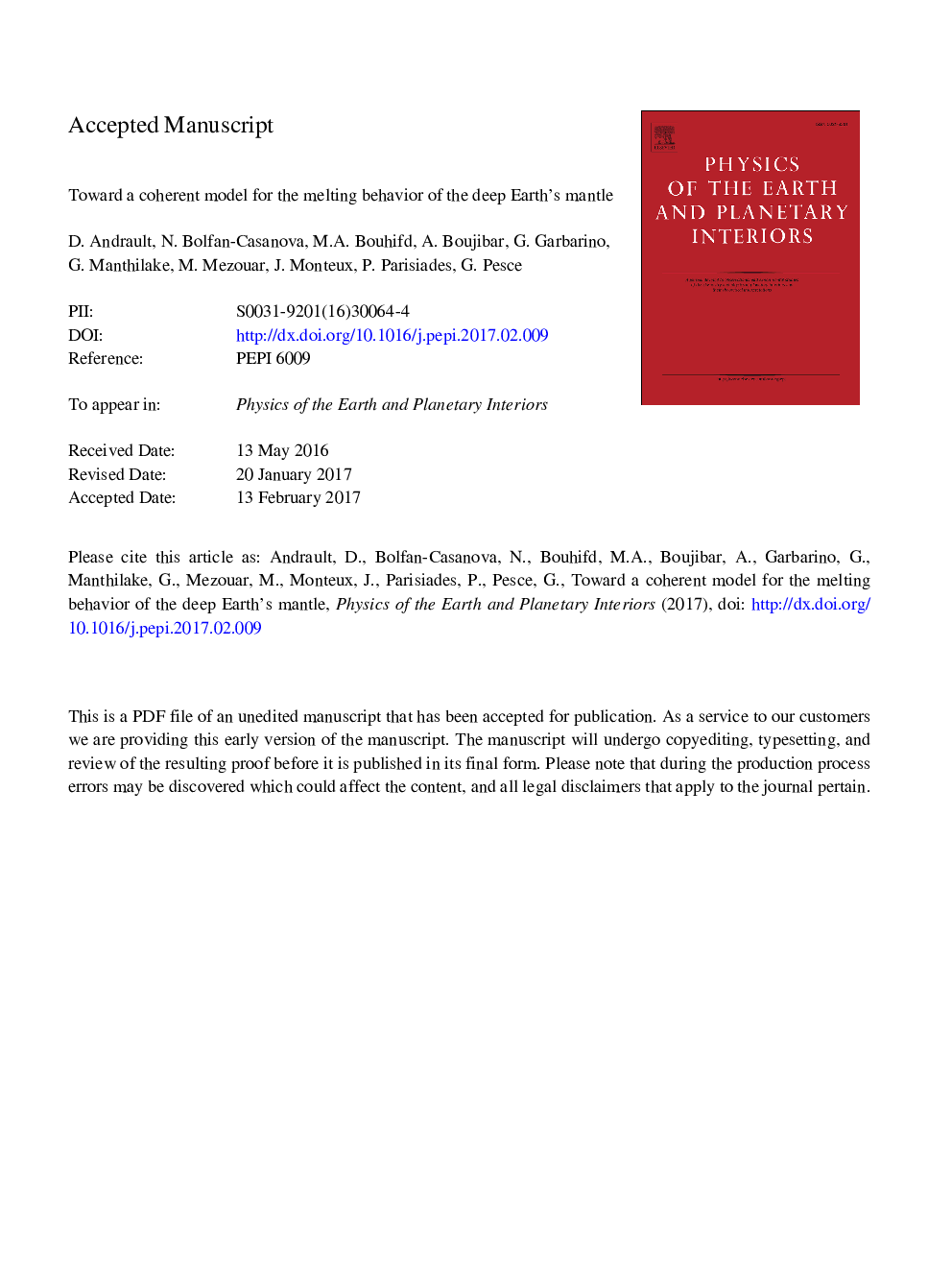| Article ID | Journal | Published Year | Pages | File Type |
|---|---|---|---|---|
| 5787367 | Physics of the Earth and Planetary Interiors | 2017 | 30 Pages |
Abstract
The coherent melting model has direct geophysical implications: (i) in the early Earth, the magma ocean crystallization could not occur for a core temperature higher than â¼5400Â K at the core-mantle boundary (CMB). This temperature corresponds to the melting of pure Bg at 135Â GPa. For a mantle composition more realistic than pure Bg, the right CMB temperature for magma ocean crystallization could have been as low as â¼4400Â K. (ii) There are converging arguments for the formation of a relatively homogeneous mantle after magma ocean crystallization. In particular, we predict the bulk crystallization of a relatively large mantle fraction, when the temperature becomes lower than the pseudo-eutectic temperature. Some chemical segregation could still be possible as a result of some Bg segregation in the lowermost mantle during the first stage of the magma ocean crystallization, and due to a much later descent of very low F, Fe-enriched, melts toward the CMB. (iii) The descent of such melts could still take place today. There formation should to be related to incipient mantle melting due to the presence of volatile elements. Even though, these melts can only be denser than the mantle (at high mantle depths) if the controversial value of DFeBg/melt is indeed as low as suggested by some experimental studies. This type of melts could contribute to produce ultra-low seismic velocity anomalies in the lowermost mantle.
Related Topics
Physical Sciences and Engineering
Earth and Planetary Sciences
Geophysics
Authors
D. Andrault, N. Bolfan-Casanova, M.A. Bouhifd, A. Boujibar, G. Garbarino, G. Manthilake, M. Mezouar, J. Monteux, P. Parisiades, G. Pesce,
